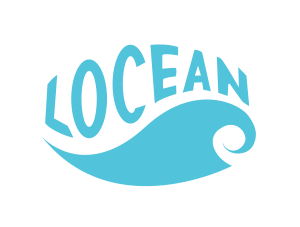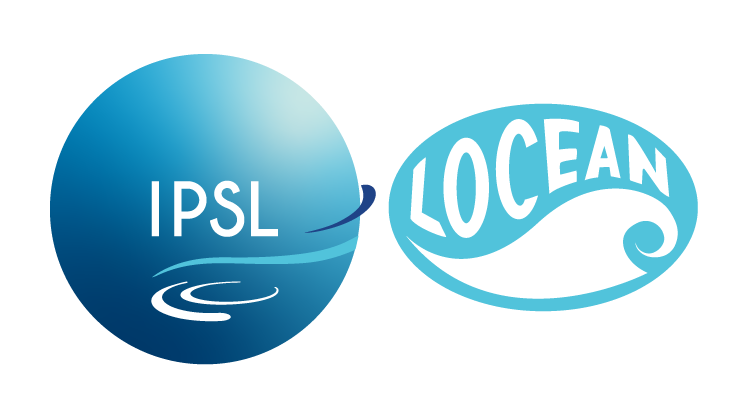Salinity: from measurement to climate
Salinity is a major variable in ocean dynamics due to its contribution to surface density and vertical stratification. On a large scales and over long periods, variations in surface salinity partly reflect net freshwater flows and are considered to be an indirect indicator of variations in the global hydrological cycle. LOCEAN makes a major contribution both in in situ and satellite measurements of salinity, as well as in the analysis and modeling of its variability in the ocean and its role in the climate system.
Mixing in the ocean
The energy injected into the ocean by wind and tides travels from large to fine scales which act as a diffusion on large-scale gradients of physical and biogeochemical variables. The resulting ocean mixing is a key factor in the transport of heat and salt in the ocean. LOCEAN has major expertise in turbulent mixing, horizontal dispersion (“stirring”) at mesoscales (10-100 km) and submesoscales (1-10 km). The research is based on in-situ measurements and their analysis, developments in the model parameterizations of mixing, the study of the impacts of the meso- / sub-mesoscale mixing on the transport of energy, matter, and on marine ecosystems.
Air-sea interactions
Exchanges at the ocean-atmosphere interface play a major role in the exchange of mass, CO2 and energy between these reservoirs. LOCEAN has major expertise in the influence of air-sea interactions on ocean variability, carbon and freshwater fluxes, in particular the acquisition of long series of surface salinity and CO2 partial pressure measurements, and on the modeling of the surface ocean (ocean-waves-atmosphere-sea ice-biogeochemistry coupling).
Downscaling the large oceanic scales
The coastal fringes of the oceans present major issues, in particular the way in which they are impacted by anthropogenic forcings. LOCEAN is developing expertise in this area to better meet social expectations, especially in Southern countries. The key questions relate to ocean circulation, coast-open ocean exchange processes, the ecological state of coastal areas, in particular their vulnerabilities to deoxygenation, acidification and eutrophication. The main regions studied are the coastal upwellings systems (Benguela, Peru-Chile, West Africa), the Indo-Pacific, the West Atlantic, and several seas (Caribbean, Mediterranean, Patagonia).
The cryosphere and polar environments
The study of polar environments requires the consideration of specific processes related to the icecovered areas at high latitudes.LOCEAN has long-standing expertise in the Arctic and the Southern Ocean, based on multidisciplinary skills: physics, marine biology and biogeochemistry, study of fine-scale processes, regional and global climate variability, instrumental development, observation campaigns and modeling.
Upwelling systems
Eastern boundary upwelling systems (EBUS) are among the most productive areas of the ocean and host very rich marine ecosystems whose exploitation is essential for the world food supply and the economy of the neighboring countries. The very arid coastal regions are a source of aerosols that can modulate the regional radiation balance, and water resources are also a major issue. LOCEAN is at the forefront to study the role of these regions in the climate system, the functioning of ecosystems, the oxygen cycle in connection with oxygen minimum zones, low frequency climate variability thanks to paleo-reconstructions, the functioning of the coastal and littoral zones bordering the EBUS.
Tropical variability
Ocean-atmosphere interactions in the tropics give rise to modes of variability with planetary impacts. LOCEAN has expertise on the role of the ocean in tropical variability, in particular the mechanisms of the monsoon, the El Niño oscillation – Southern Oscillation (ENSO), the Indian Ocean Dipole (IOD), the Madden-Julian Oscillation (MJO) . Combining their expertise, LOCEAN researchers also address the tropics – extra-tropics interactions, and the role of the tropics in decadal variability, extreme phenomena (cyclones, rainfall in West Africa) and their socio-economic impacts. This expertise contributes in particular to the development of the coupled model of the IPSL.
Decadal variability: past, present and future
Climate decadal variability brings the memory of the ocean into the foreground. LOCEAN, as part of IPSL, is therefore a major player at the national level: it contributes to the CMIP exercises that feed into the IPCC reports. LOCEAN expertise focuses on understanding the mechanisms of decadal variability and its predictability, on the complementarity of observations – past, present and future modeling, and the detection of climate change due to human activities.
Climate change and impacts
Global changes carry disruptive effects, the impacts of which on ecosystems, physical environments and societies need to be well understood, in order to strengthen their resilience. LOCEAN, located at the interface between climate sciences (IPSL) and biological sciences (MNHN and IRD), has an integrated analysis capacity based on the observations, modeling, and theory. The lines of research focus on past, present and future climate change and variability, climate impacts on natural and human systems, adaptation to climate change.
Functioning and variability of the oceanic carbon pump
The establishment of the planet’s carbon budget is based on observations of atmospheric and oceanic CO2 and on the evolution of oceanic and terrestrial CO2 sinks. Moreover, the accumulation of anthropogenic CO2 in the ocean leads to the phenomenon of acidification, the impacts of which on ecosystems remain poorly understood. LOCEAN is strongly invested in maintaining long time series of observations and in the study of phytoplankton groups participating in the biological pump. The observations collected make it possible in particular to better constrain coupled climate / carbon models.
Abiotic forcings on marine ecosystems
The main challenge is to understand how marine organisms react to the environmental variability associated with global change, human activity, and the intrinsic variability of the ocean, in order to better understand and protect the marine environment, and better manage its resources, and better use biological markers as environmental indicators. LOCEAN’s research effort focuses on the impact of the environment on the metabolism of primary producers and their feedback on climate, the impact of the physics and chemistry of the ocean on the structure and biodiversity of phytoplankton communities, the impact of the physical environment on the upper trophic levels.
Model-data integrated approaches
Ocean and climate models simulate finer spatial resolutions for increasingly longer time periods. Besides, the spatial coverage of observations is improving and long time series are available. Finally, some paleoclimatic data currently reach annual resolutions. LOCEAN has expertise in the integrated model-data approach at super-inertial to decadal scales and beyond. This research materializes in particular through the co-production of regional reanalyses, climatic reconstructions over the last millennium, and the development of in situ and satellite sampling strategies.
Data science for the ocean
The study of climate and the environment requires increasingly complex methods because of the quantity and heterogeneity of the information available. This challenge can be met with data science, a new discipline at the crossroads of mathematics, statistics and computer science. The objective of this axis is the development of innovative approaches for the processing of oceanographic / climatic data, based on methods of classification, learning (“machine learning”), data assimilation, prediction, detection / attribution methods


